The success of the tins gave rise to copies of the designs which Huntley & Palmers acted quickly to quash. In 1896, the Staffordshire pottery company of Burgess and Leigh used the design of a Huntley & Palmers' 'Indian' tin of 1894 to make this teapot. Huntley & Palmers threatened legal action for infringing its copyright. Burgess and Leigh responded by promising to produce all further teapots in the monochrome version and Huntley & Palmers took no further action.
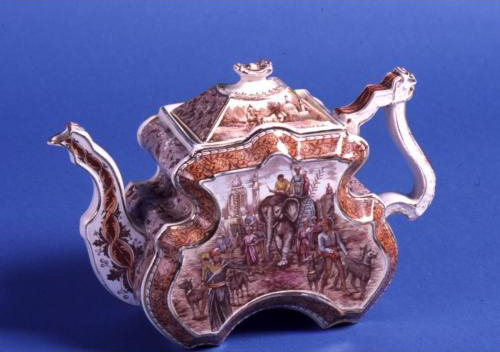
The ornately decorated Burgess and Leigh teapot that Huntley and Palmers accused of copying their 'Indian' tin design. (REDMG : 1985.22.1)
Christmas catalogues
Every year Huntley & Palmers would produce new tin designs and the Christmas market was the main focus of these activities. Many of the Christmas tins would appeal to children or would represent recent fashions or events, like the discovery of Tutankhamun's tomb. The tins were marketed through a catalogue which would display the new tin designs. These catalogues are now almost as collectable as the tins themselves.
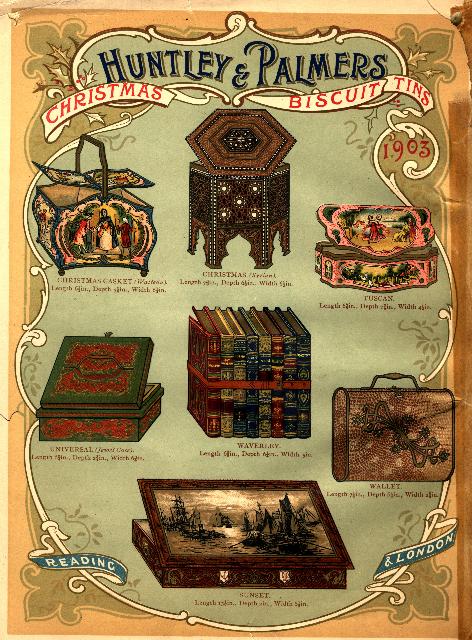
This illustrated catalogue for Christmas 1903 has a list of prices on the back of each page. In 1903 the Christmas tins were Christmas casket, Christmas (Syrian), Tuscan, Universal (Jewel Case), Waverley, Wallet and Sunset. (REDMG : 1994.21.2)
Other tin manufacturers
Although the majority of Huntley & Palmers' tins were made by Huntley, Boorne & Stevens, they did use other tin manufacturers as the East and West tin illustrates. Any firm could buy an exclusive right to a tin design. Alternatively, for a smaller amount, they could secure the rights to a particular design for a year or two after which the design would become available to other manufacturers.
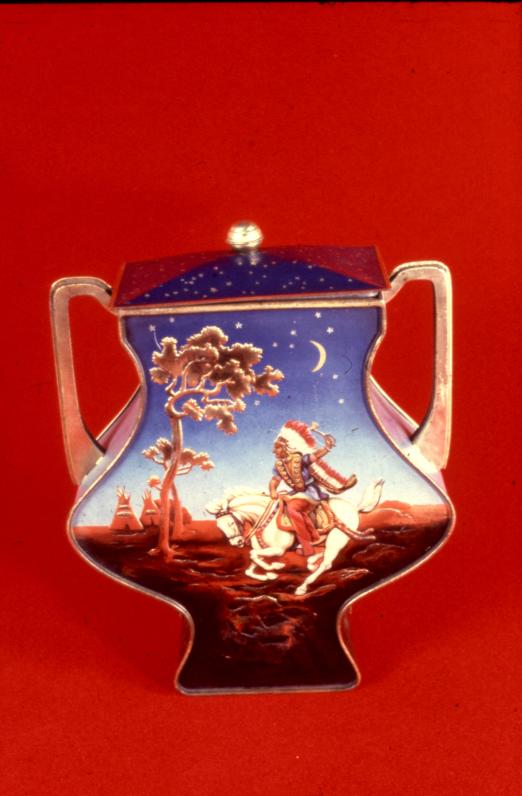
This tin featuring Native Americans on one side and an Arabian desert scene on the other was made for Huntley & Palmers by Barringer, Wallis & Manners using offset litho and embossing. (REDMG : 1992.2.218)
Sample tins
Huntley & Palmers gave away these specially made sample tins to boost sales or to launch a new product. The small tins could only hold three or four biscuits and this successful marketing strategy was used until the 1950s. The blue tin in the picture is a smaller version of the Dundee Cake tin.
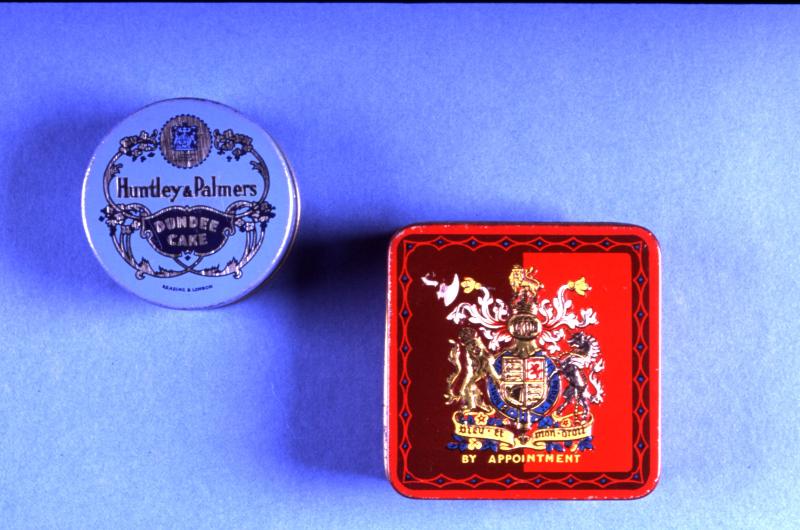
Huntley & Palmers gave away free samples to advertise new products. In the 1930s cake production was dramatically increased by the firm and this Dundee Cake tin reflects the growing importance attached to cakes by Huntley & Palmers. (REDMG : 1992.2.319)
Miniature tins
From 1922 Huntley & Palmers began to produce miniature tins filled with miniature biscuits. These were even smaller than the sample tins being 4.5cm tall and were mini-replicas of the large shop-display tins with the garter and buckle design. They made excellent Christmas stocking fillers for children.
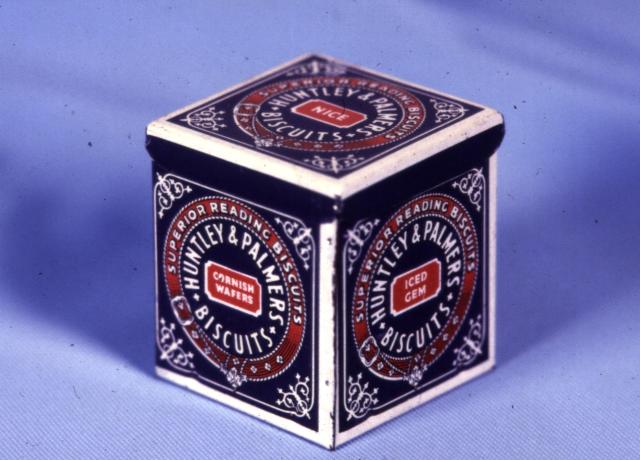
A miniature tin labelled Cornish Wafers, Iced Gem, Nice, Petit Beurre and Osborne. They were described as 'Miniature tins packed with miniature biscuits - A replica of the foundation of a good biscuit stock'. (REDMG : 1997.79.52)
Do you hear the sleigh bells ringing? On the next page, learn about Huntley & Palmers' Christmas Catalogues!





